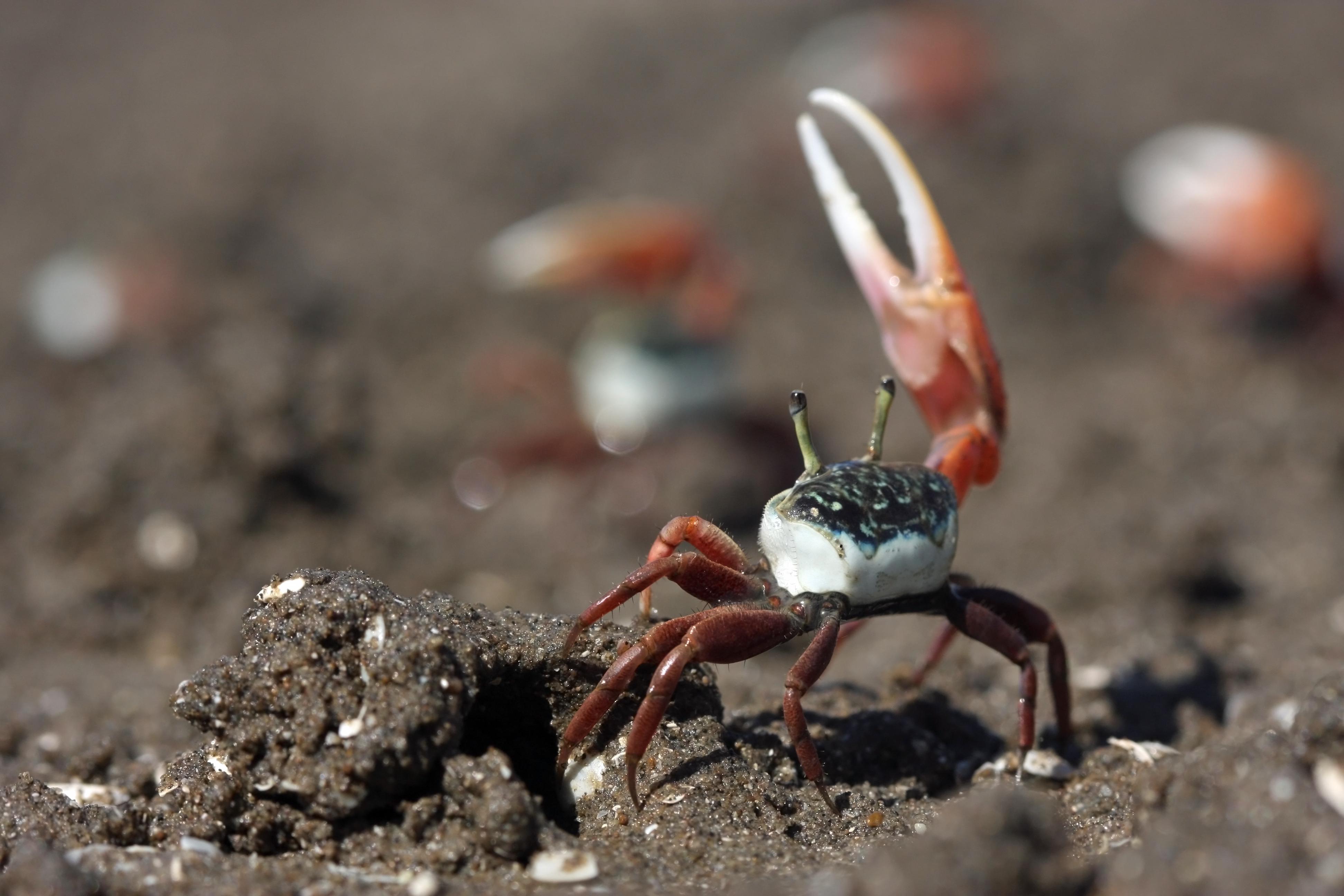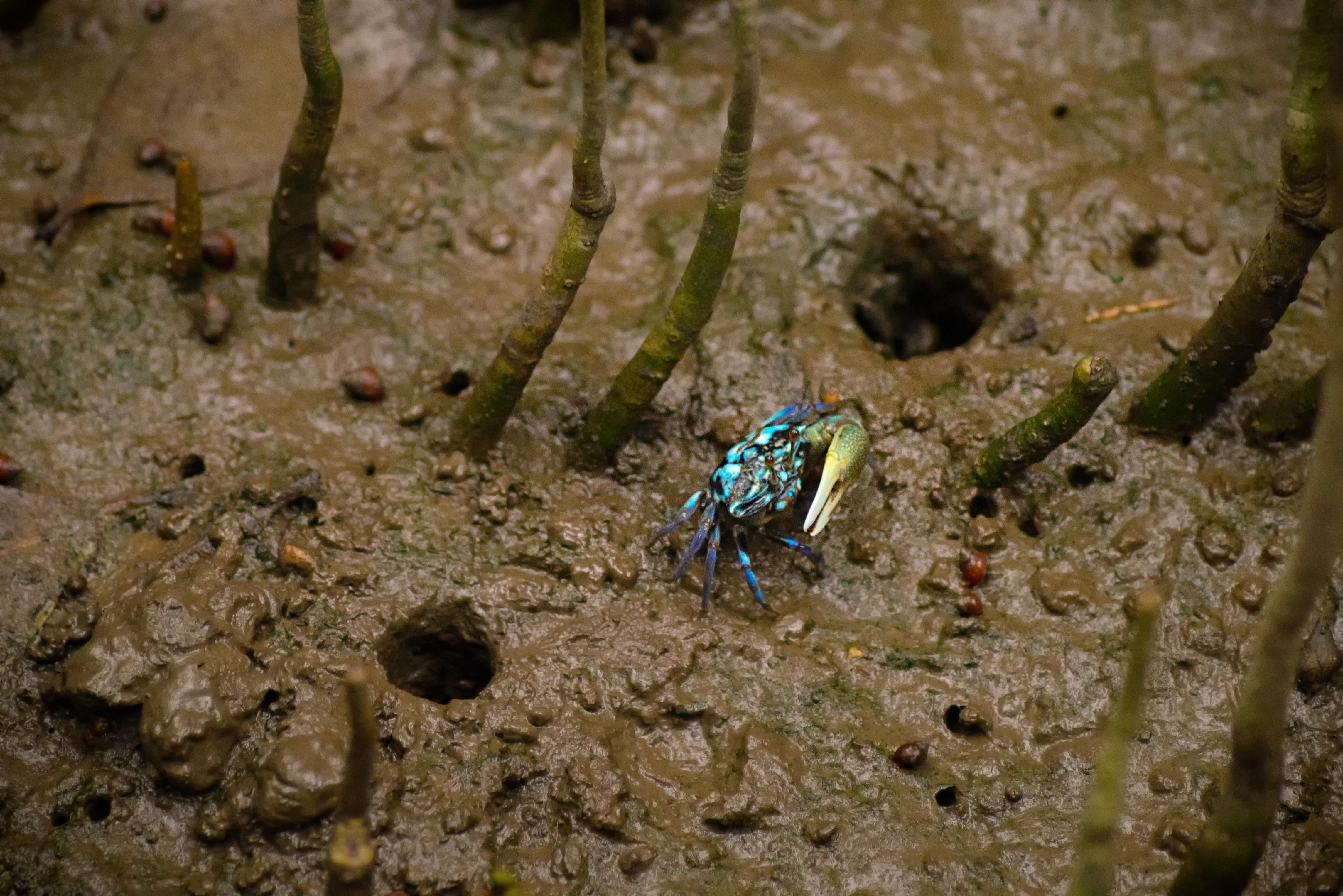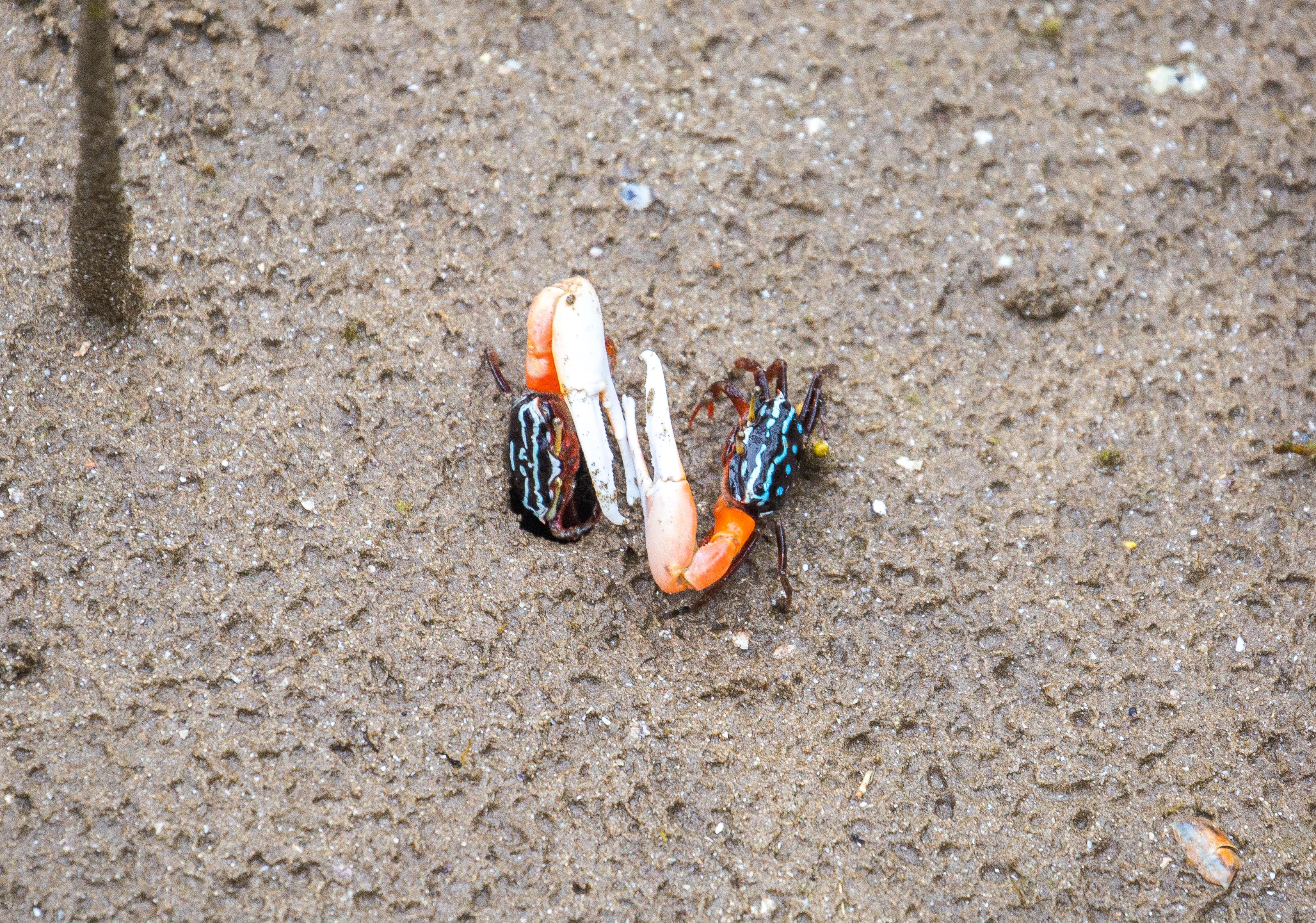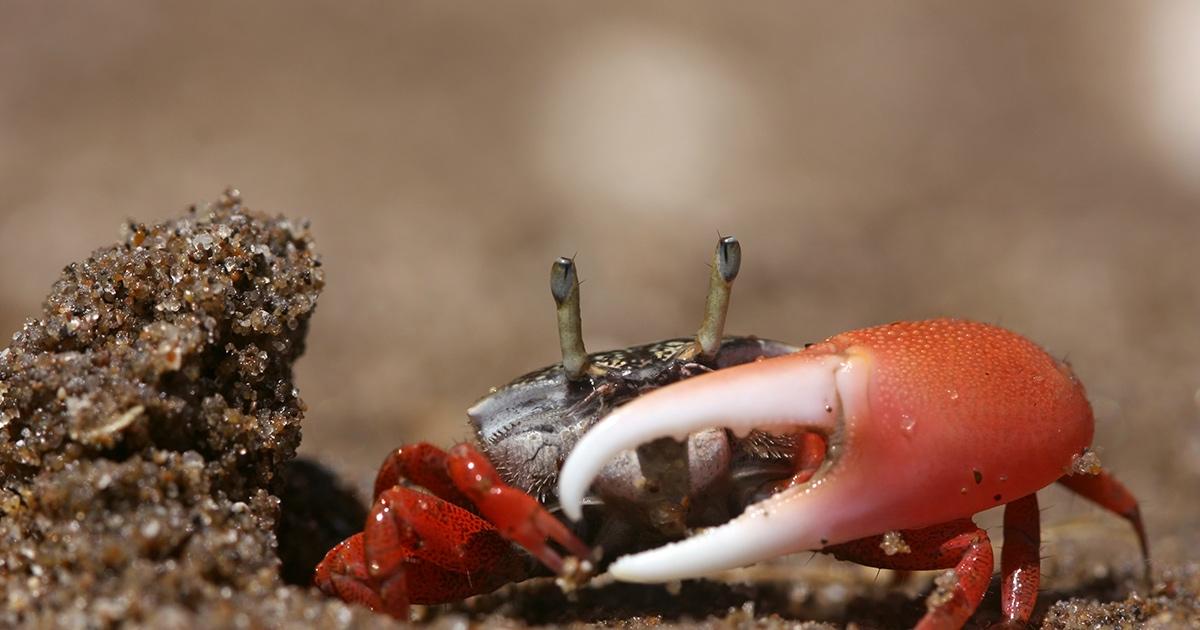In the warm coastal shorelines of the tropics, mangrove forests flourish. The saltwater jungle constructed by a jumble of trees compressed together, bounded by the continuous rise and fall of ocean tides.
Rhizophora and Avicennia grow tangling their roots above ground, forming an almost impenetrable labyrinth. The wooden maze provides a safe home to numerous meiofauna and infauna. Inside the hustle and bustle of a fully functioning mangrove city, a congregation of tiny animals' wave and dance. The beings responsible for the visual display are a species of crab, Fiddler crabs; suitably named as the male have an enormous claw resembling a fiddle.
 The life of a male fiddler crab
The life of a male fiddler crab
The relationships observed within fiddler crab communities are far more social and intricate than initially imagined by researchers. Males dedicate themselves to protecting their burrow and finding a female mate. Once the male crab has found a suitable territory to build their home, he will stop at nothing to defend it against trespassers. Males use their giant claw to protect the burrow when threatened, turning the scenic mangrove into a potential battlefield where the victor lays claim on the precious den. Losing a burrow is a tough break for a crab; they must then set out to the edge of their community to find an empty home or battle with another resident male.
The claw is used in aggression against, within and between species, however, it also another charismatic function. Male crabs utilize their claw in courtship dances to attract a female.
Is the size of the male claw dependent on age?
The claw will continuously grow with age, from a juvenile until adulthood. After this, the claw will remain that size. The size and shape of the claw will differ within, and between species, some having larger claws than others.
 Courtship and Mate Selection
Courtship and Mate Selection
Sit back, grab the popcorn, and enjoy the romantic comedy that is the mating process of fiddler crabs.
Male fiddler crabs emerge from their burrows and commence in concert, waving their abnormally large claws. The males enthusiastically wave their giant claw in a series of rhythms as part of a visual attempt to entice distant females into their burrow. The females begin to roam and meander past each male, and a sort of crab' speed dating' commences. The rhythmic movements become more intricate as a female advance towards them.
But females will visit many males, taking her time before selecting her match. During these visits, a male will dart into his burrow followed by the female, but after a few short seconds, he returns to the surface while she inspects her potential new home in private. When the female is set on a mate, she will remain inside his burrow and not re-emerge. The male plugs the burrow with sand to keep the female safe inside while she incubates her eggs. The female remains safe and secure in the burrow for two weeks while the male is left to wander the mangroves in search of an empty burrow or to fight for one.
Females have strong inherent mating preferences. Dr. Laura Michie, University of Portsmouth, said: "Often the biggest brightest claw entices the female, but also the male that waves first, which is the reason they end up moving in synchrony." Michie studied fiddler crab species in Wakatobi Marine National Park, Indonesia.
Mate selection has also been tested using a robotic crab, with varying wave rate, claw size, and wave timing. The largest and fastest most energetic wave was preferred by females. So, in this situation, size really does matter
Species coexistence
When conducting research for her Ph.D. project, Michie documented ten different species of fiddler crab coexisting. This value is far higher than ever recorded before. For similar species to coexist, they must have their own niche which does not overlap.
A suggested reason for many species occupying the same neighborhood is their difference in food preference and how they feed. Fiddler crabs have a maxilliped-setation, a structure in their mouthparts used to filter sediment for food particles. This is relative to habitat and sediment type. Crabs living in the sandy neighborhood, for example, have more spoon-tipped setae, which are stiff hair-like structures used to filter sandy sediment. Whereas crabs living in muddy areas have more plumose setae to sieve the sediment.
While in Indonesia, Michie observed different species of fiddler crab working together to secure their neighbor's territory and protect each other's homes. Once territory boundaries and friendships have been established between neighbors, intruders will struggle to evict residents. "A fiddler crab community can be likened to a soap opera, with many dramatic behaviors, courtship displays, and complex relationships," said Michie. "The neighboring crabs formed alliances that significantly increased their chances of repelling intruders." This mutual agreement is termed a 'dear enemy' relationship, which creates a neighborhood watch approach to the mangrove.
Why is the male claw much larger than the female?
The difference in claw size is an excellent example of sexual dimorphism. Males have adapted to have a larger claw through evolution to attract the female. Males are also more elaborately colored, and, as such, regarded as the peacocks of the invertebrate world.
 Mangrove Deforestation – what does the future have in store for Fiddler crabs?
Mangrove Deforestation – what does the future have in store for Fiddler crabs?
Today, sea-level rise and habitat loss are the two biggest threats to fiddler crab populations. Over the last century, mangrove forests have been destroyed for coastal development, aquaculture, timber and the production of fuel. Removing mangroves reduces the availability of shaded areas and the nutrients that fiddler crabs can exploit as part of their daily life. Mangrove habitat reduction will begin to push crab species closer together forcing them to coexist.
The local people in Wakatobi use mangroves as dumping grounds for their waste. Currently, this is beneficial for the fiddler crabs as the added nutrients can support more individuals. But there is a balance. While people may add nutrients into the mangrove system, they also remove nutrients with deforestation.
Negotiating property lines can be hard enough for these tiny architects without the increased competition from neighboring species fleeing their burrows to make way for new hotels.
Over the years, Michie has witnessed the decrease in mangrove forests: "Even in the National Park, it is difficult to regulate and enforce the protection of mangroves, which is vital for fiddler crabs. Areas surrounded by mangroves often accommodate more species because of nutrient abundance, whereas areas that are not adjacent to mangroves have fewer species due to limited nutrients".
The lives of fiddler crabs are far from simple. Being a fiddler crab is not always a walk in the mangrove. Fiddler crabs are highly social animals with a diverse behavioral repertoire. Males can experience a variety of emotions, from aggression to protection, dedication to devotion. They communicate using visual signals, have complex territorial interactions, and flexible courtship and mating techniques. Today's natural and anthropogenic changes to mangrove forests have seen different fiddler crab species work together to survive. But with the increasing destruction of the mangroves, comes the impending demise of these complex communities. There really is more to these fascinating creatures than meets the eye.
Story by Jesie Dyos, Institute of Marines Sciences, University of Portsmouth





